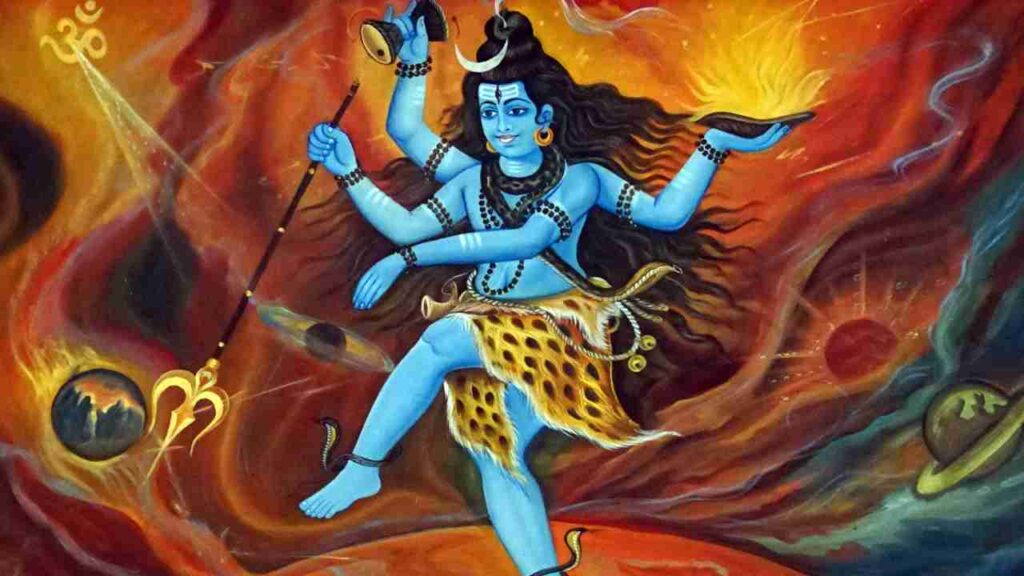Celebrating Maha Shivratri 2024: Maha Shivratri, one of the most significant Hindu festivals, is celebrated with great fervor and devotion across the globe. In 2024, devotees eagerly anticipate the auspicious occasion to honor Lord Shiva. Let’s delve into the rituals, significance, and the joyous atmosphere that surrounds the Maha Shivratri celebrations this year.
Celebrating Maha Shivratri 2024: Rituals, Significance, and Festive Joy

Festive Joy and Cultural Celebrations:
Beyond the solemnity of religious rituals, Maha Shivratri unfolds into a vibrant tapestry of joyous celebrations and cultural events, creating an atmosphere of communal harmony and spiritual revelry. The festivities extend beyond the confines of temples, embracing a wider cultural panorama. Here are the elaborate details of the festive joy surrounding Maha Shivratri:
- Bhajan and Kirtan Sessions: Temples come alive with the soul-stirring melodies of bhajans (devotional songs) and kirtans (devotional chants). Devotees gather in large numbers to participate in these sessions, singing hymns that extol the virtues of Lord Shiva. The resonance of collective devotional singing fills the air, creating an atmosphere charged with spiritual energy. These sessions not only deepen the connection between worshippers and the divine but also evoke a sense of unity among participants.
- Cultural Programs: Maha Shivratri becomes a platform for diverse cultural expressions as temples and community centers organize cultural programs. These events showcase traditional music, dance, and theatrical performances inspired by the rich mythology surrounding Lord Shiva. Folk artists, classical dancers, and musicians come together to offer vibrant presentations that both entertain and educate, contributing to the cultural tapestry of the celebration.
- Dance Performances: Cultural celebrations often feature dance performances that pay homage to Lord Shiva’s divine attributes. Traditional dance forms such as Bharatanatyam, Kathak, and Odissi may be employed to depict stories from Hindu mythology, particularly those related to Lord Shiva’s cosmic dance, the Tandava. These performances add a visual spectacle to the festivities, captivating audiences and infusing the celebration with artistic brilliance.
- Spiritual Discourses: Alongside the revelry, Maha Shivratri provides a platform for spiritual discourses and discussions. Renowned spiritual leaders, scholars, and gurus may share insights into the philosophical and symbolic aspects of Lord Shiva’s teachings. These discourses offer worshippers an opportunity for intellectual and spiritual growth, enhancing their understanding of the profound concepts embedded in the mythology and philosophy associated with Maha Shivratri.
- Community Bonding: The festive joy extends beyond individual devotion, fostering a sense of community among worshippers. Families and friends come together to celebrate, sharing the joy of the occasion. Community feasts, gatherings, and social activities strengthen the bonds among devotees, creating a supportive and uplifting environment.
FAQ’s on Lord Shiva and Festival
1. What is Maha Shivratri, and when is it celebrated in 2024?
- Answer: Maha Shivratri is a significant Hindu festival celebrated on the 14th day of the dark fortnight in the Hindu month of Phalguna. In 2024, it holds deep significance for devotees eager to honor Lord Shiva.
2. What are the key rituals observed during Maha Shivratri?
- Answer: Devotees engage in fasting (Vrat), night vigils (Jagran), offering bael leaves and milk to the Shiva Lingam, and chanting powerful Shiva mantras.
3. Why do devotees fast during Maha Shivratri?
- Answer: Fasting during Maha Shivratri is a symbolic act of purification for the body and soul, demonstrating a spiritual commitment to abstain from worldly pleasures.
4. What is the significance of the night vigil (Jagran) on Maha Shivratri?
- Answer: The night vigil is a hallmark of Maha Shivratri where devotees stay awake in devotion, creating a spiritual communion with the divine through prayers, hymns, and continuous chanting of mantras.
5. Why are bael leaves and milk offered to Lord Shiva during Maha Shivratri?
- Answer: Devotees offer bael leaves and milk to symbolize the three aspects of Lord Shiva – creation, preservation, and destruction. Pouring milk over the Shiva Lingam signifies the purification of the soul.
6. What is the significance of chanting Shiva mantras during Maha Shivratri?
- Answer: Chanting powerful Shiva mantras, including the Maha Mrityunjaya Mantra, is believed to invoke divine energy, offering protection from negativity, overcoming obstacles, and attaining spiritual enlightenment.
7. What is the Tandava, and why is it significant on Maha Shivratri?
- Answer: The Tandava is the cosmic dance of Lord Shiva, symbolizing the eternal cycle of creation, preservation, and destruction. Maha Shivratri is believed to be the night when this celestial dance occurs.
8. How does Maha Shivratri provide an opportunity for spiritual cleansing?
- Answer: Maha Shivratri is considered a time for devotees to cleanse their karma through rituals, fasting, and devotional practices, allowing them to release negative energies and start afresh on their spiritual journey.
9. What blessings do devotees seek during Maha Shivratri?
- Answer: Devotees seek blessings for personal and spiritual growth, divine guidance, strength, and wisdom. The emphasis is on inner transformation, self-awareness, and the pursuit of higher consciousness.
10. How does Maha Shivratri contribute to attaining inner peace?
- Answer: The spiritual vibrations of Maha Shivratri create an atmosphere conducive to inner reflection and tranquility. Devotees engage in acts of devotion, such as meditation, to experience profound serenity and connect with their inner selves.
11. Share an experience related to Lord Shiva Darshan during Maha Shivratri.
- Answer: The text mentions the author’s personal experience of having Lord Shiva Darshan at a temple in Hyderabad.
12. How do bhajan and kirtan sessions contribute to the festive joy of Maha Shivratri?
- Answer: Bhajan and kirtan sessions involve devotional songs and chants, creating a vibrant and devotional ambiance, fostering unity among worshippers expressing their devotion through music.
13. What role do cultural programs play during Maha Shivratri celebrations?
- Answer: Cultural programs showcase traditional music, dance, and theatrical performances inspired by Lord Shiva’s mythology, contributing to the cultural tapestry of the celebration.
14. Why are dance performances, depicting Lord Shiva’s attributes, included in Maha Shivratri celebrations?
- Answer: Dance performances, including traditional forms like Bharatanatyam and Kathak, pay homage to Lord Shiva’s divine attributes, adding a visual spectacle to the festivities.
15. How do spiritual discourses contribute to Maha Shivratri celebrations?
- Answer: Spiritual discourses provide insights into the philosophical and symbolic aspects of Lord Shiva’s teachings, offering worshippers an opportunity for intellectual and spiritual growth.
16. How does Maha Shivratri foster community bonding?
- Answer: The festive joy extends beyond individual devotion, bringing families and friends together for community feasts, gatherings, and social activities, strengthening the bonds among devotees.
17. Why is Maha Shivratri considered a transformative journey?
- Answer: Beyond rituals and festivities, Maha Shivratri becomes a transformative journey aligning individuals with cosmic forces, guiding them towards spiritual evolution, self-purification, and inner peace.
18. How does the Tandava symbolize the cyclical nature of life on Maha Shivratri?
- Answer: The Tandava, Lord Shiva’s cosmic dance, symbolizes the eternal cycle of creation, preservation, and destruction, highlighting the cyclical nature of life, death, and rebirth.
19. What is the symbolic significance of pouring milk over the Shiva Lingam on Maha Shivratri?
- Answer: Pouring milk over the Shiva Lingam signifies the purification of the soul and is a gesture of offering the essence of one’s devotion to the divine.
20. How does Maha Shivratri provide a unique opportunity to connect with cosmic energies?
- Answer: Maha Shivratri, with its intricate rituals and spiritual practices, offers devotees a unique opportunity to connect with cosmic energies, seeking blessings for spiritual growth, inner peace, and divine grace.
ALSO READ : Dakshin Ke Badrinath Temple Opens Its Doors for Darshan : Telangana Welcomes the Divine

